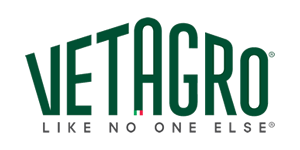Background and objectives of the WG-AB
The study of the behaviour of animals that are under some form of human management (i.e. applied ethology) is generally associated with animal welfare science. There are many good reasons for the close link between animal behaviour and animal welfare including the fact that behaviour represents the first line of an animal’s defence towards a stressor. This link needs to be preserved and strengthened so it is appropriate that the WG-AB is directly linked to the Health and Welfare (H&W) Commission of the EAAP. Nevertheless, applied ethology has much more to offer. There are several other scientific disciplines (e.g. breeding, reproduction, nutrition, veterinary sciences) which could benefit from applied ethology to help answer their research questions. Many of these disciplines are represented in the scientific study commissions of the EAAP. Hence the aim of the EAAP working group (WG) on animal behaviour (AB) is to promote the use of ethological measures in animal science.
Recent activities
Laura Boyle (LB) and Hans Spoolder (HS) of the H&W Commission attended the annual congress of the International Society of Applied Ethology in Edinburgh in July 2016. They presented EAAP’s plans to set up a WG at the ISAE Council meeting on Tuesday 12th July. They also outlined potential benefits to both societies of collaboration. The ISAE President Birte Nielsen and rest of Council were positive about the initiative. Potential joint activities, mainly focussing on the ISAE and EAAP annual meetings were discussed and ISAE confirmed their support of an ISAE stand at the Belfast EAAP meeting. One of the Council members (Krista McLennan) volunteered to be the ISAE Council member to progress the collaboration, and she will join the WG-AB for one year (she finishes her term in ISAE Council in 2017).
EAAP banners were displayed at the ISAE meeting and HS and LB were available at the stand to answer queries at all coffee breaks. Flyers for the EAAP meeting in Belfast were also distributed.
During the Annual General Meeting of the ISAE on Thursday 14th July the ISAE president Birte Nielsen referred to the EAAP-ISAE collaboration on animal behaviour. There was a question regarding the scientific level of animal behaviour at EAAP, which Birte answered positively by reiterating the benefits to both societies of using each other’s expertise. Both LB and HS will support the distribution of leaflets advertising the 2017 ISAE meeting in Denmark at the EAAP meeting in Belfast.
In line with the establishment of the WG-AB, Prof. Sandra Edwards will present a key note paper on animal behaviour expertise in support of nutrition research at this year’s EAAP meeting in Belfast.
Members
With help from the ISAE and EAAP secretariats we found out that there are at least 30 EAAP colleagues who are members of both societies (as per April 2015). We approached a number of people of who we know that they attend the conferences regularly, represent different European countries and a focus on different species. Six of them were not just pleased to be asked, but also happy to participate in the WG.
Frank Tuyttens: IVLO frank.tuyttens@ilvo.vlaanderen.be
Antonio Velarde: IRTA Antonio.Velarde@irta.es
Satu Raussi: University of Helsinki satu.raussi@helsinki.fi
Keelin O’Driscoll: Teagasc keelin.odriscoll@teagasc.ie
Marie-Christine SALAUN: INRA Marie-Christine.Salaun@rennes.inra.fr
Simon Turner: SRUC Simon.Turner@sruc.ac.uk
We propose to start the WG with this group, in addition to the three initiators:
Laura Boyle, Teagasc Moorepark Research Centre, laura.boyle@teagasc.ie
Hans Spoolder, Wageningen, The Netherlands, hans.spoolder@wur.nl
Krista McLennan, University of Chester, k.mclennan@chester.ac.uk
Potential activities
The activities will be decided once the group has had its first meeting (physical or digital, a date needs to be decided).
Several potential activities have already been suggested by the group members mentioned above, and in discussions with ISAE council members:
- Conference sessions involving animal behaviour science in relation to other areas of animal science at future meetings of the EAAP
- Conference sessions or presentations at ISAE on the relationship between animal behaviour and commercial industry needs
- Joint paper writing. Perhaps for Animal Frontiers?
- Organising workshops or training sessions at future ISAE and EAAP meetings
- Contributions to the ISAE and EAAP newsletters
- Continued presence at each other’s conference, to promote both societies. This could be via a stand, or otherwise.

















